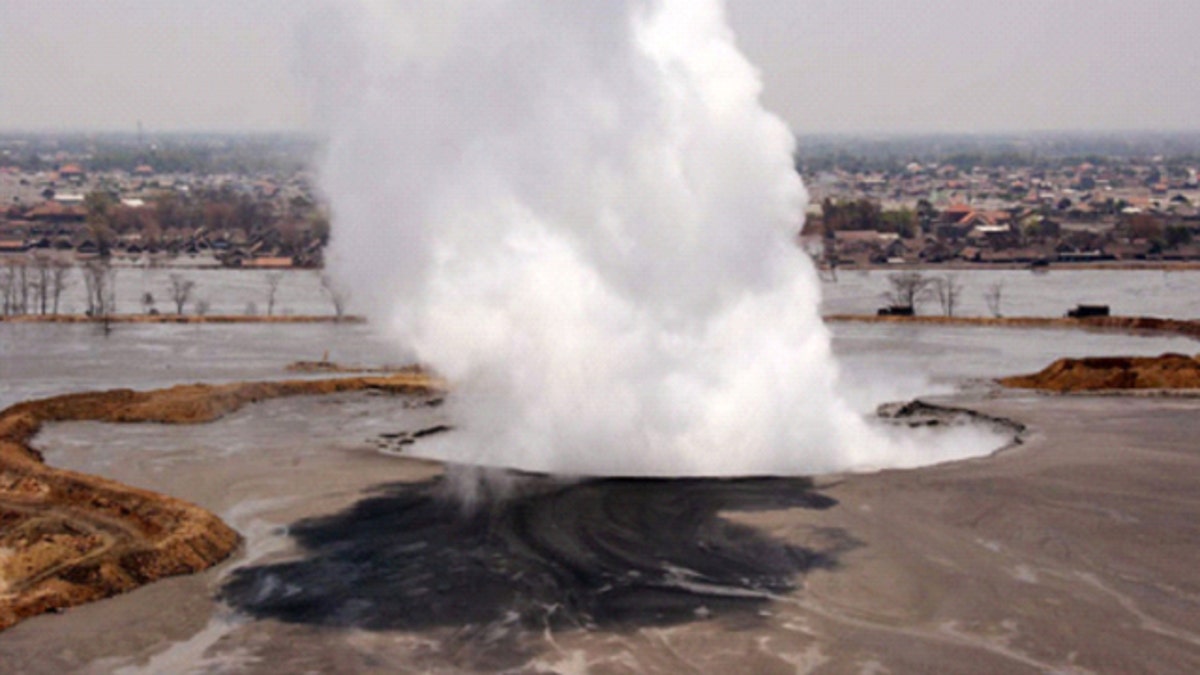
The main vent of the Lusi mud volcano taken within a few months of eruption. (Durham University)
SIDOARJO, Indonesia – A mud volcano that has displaced more than 13,000 Indonesian families will erupt for at least a quarter of a century, emitting belches of flammable gas through a deepening lake of sludge, scientists reported Thursday.
Underground pressure means the volcano "Lusi," in Sidoarjo, East Java, is likely to gush gray mud until 2037, when volumes will become negligible, according to their computer model.
But gas will continue to percolate through it for decades and possibly centuries to come.
"Our estimate is that it will take 26 years for the eruption to drop to a manageable level and for Lusi to turn into a slow bubbling volcano," said team leader Richard Davies, a professor of Earth sciences at Durham University in northeast England.
Thirteen people were killed after Lusi erupted on May 29, 2006.
At its height, the volcano gushed 40 Olympic-sized pools of mud each day, a rate that has now slowed to four per day, Davies said.
Its lake of mud has now smothered 12 villages to a depth of up to nearly 50 feet (15 meters) and forced around 42,000 people from their homes.
The computer simulation is based on data from two existing commercial gas wells in the same region and on seismic reflection data that gives a picture of Lusi's geological structure.
Its staying power means it will be a long-term but gradually less dramatic menace, Davies warned.
"I think we've seen the most dramatic destruction. But it's not the end of the story," he said.
The Indonesian government blames the eruption on an earthquake that struck days before, about 174 miles (280km) away.
But foreign experts accuse a gas drilling company, Lapindo Brantas, of failing to place a protective casing around a section of its well.
As a result, the well hole was exposed to a "kick" from pressurized water and gas that lie beneath the layer of mud, thus driving the gray, concrete-like fluid to the surface
The study was released in the London-based Journal of the Geological Society.
